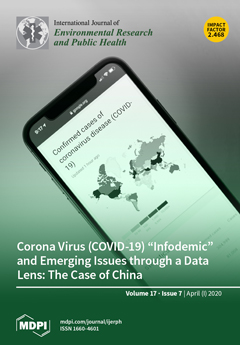Currently, it is well accepted that physical exercise-induced oxidative stress may damage biological structures and impair cellular functions. However, it is still unclear which type of exercise results in the greatest oxidative stress responses among a healthy untrained population. The aim of the
[...] Read more.
Currently, it is well accepted that physical exercise-induced oxidative stress may damage biological structures and impair cellular functions. However, it is still unclear which type of exercise results in the greatest oxidative stress responses among a healthy untrained population. The aim of the present study was to compare the acute oxidative stress response (i.e., 0 to 20 min) following different types of exercise (anaerobic, aerobic, and combined). Ten healthy, untrained males (19.5 ± 1.7 years) performed three randomized exercise bouts: anaerobic (30 s Wingate test), aerobic (30 min at 60% maximal aerobic power (MAP)) or combined (anaerobic and aerobic). Venous blood samples were collected before, as well as at 0 (P0), 5 (P5), 10 (P10), and 20 (P20) min after each session. Rates of malondialdehyde (MDA) and antioxidant activities (i.e., glutathione peroxidase (GPX), superoxide dismutase (SOD), glutathione reductase (GR), α-tocopherol, and total antioxidant status (TAS)) were assessed. Independent of exercise type, plasma MDA, GPX, SOD, and GR contents increased above baseline, whereas plasma α-tocopherol decreased under baseline after the test sessions (
p < 0.05). Aerobic and anaerobic exercises generated faster responses (at P0) when compared to the combined exercise (P5 to P10) for the majority of the tested parameters. Plasma TAS content only increased following the aerobic exercise at P10 (
p = 0.03). Five to twenty-minutes post exercise, the highest MDA response was registered in the aerobic condition, and the highest GPX and SOD responses were recorded in the anaerobic (at P5) and aerobic (at P20) conditions (
p < 0.05). In conclusion, aerobic, anaerobic, or combined exercises have the potential to acutely increase oxidative stress and antioxidant activities, but with different responses magnitude. These findings confirm that oxidative stress response seems to be dependent on the intensity and the duration of the physical exercise and may help in understanding how varying exercise bouts influence the degree of oxidative stress among healthy untrained young adults.
Full article





